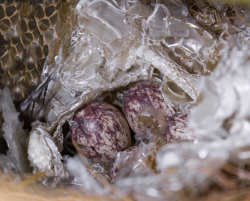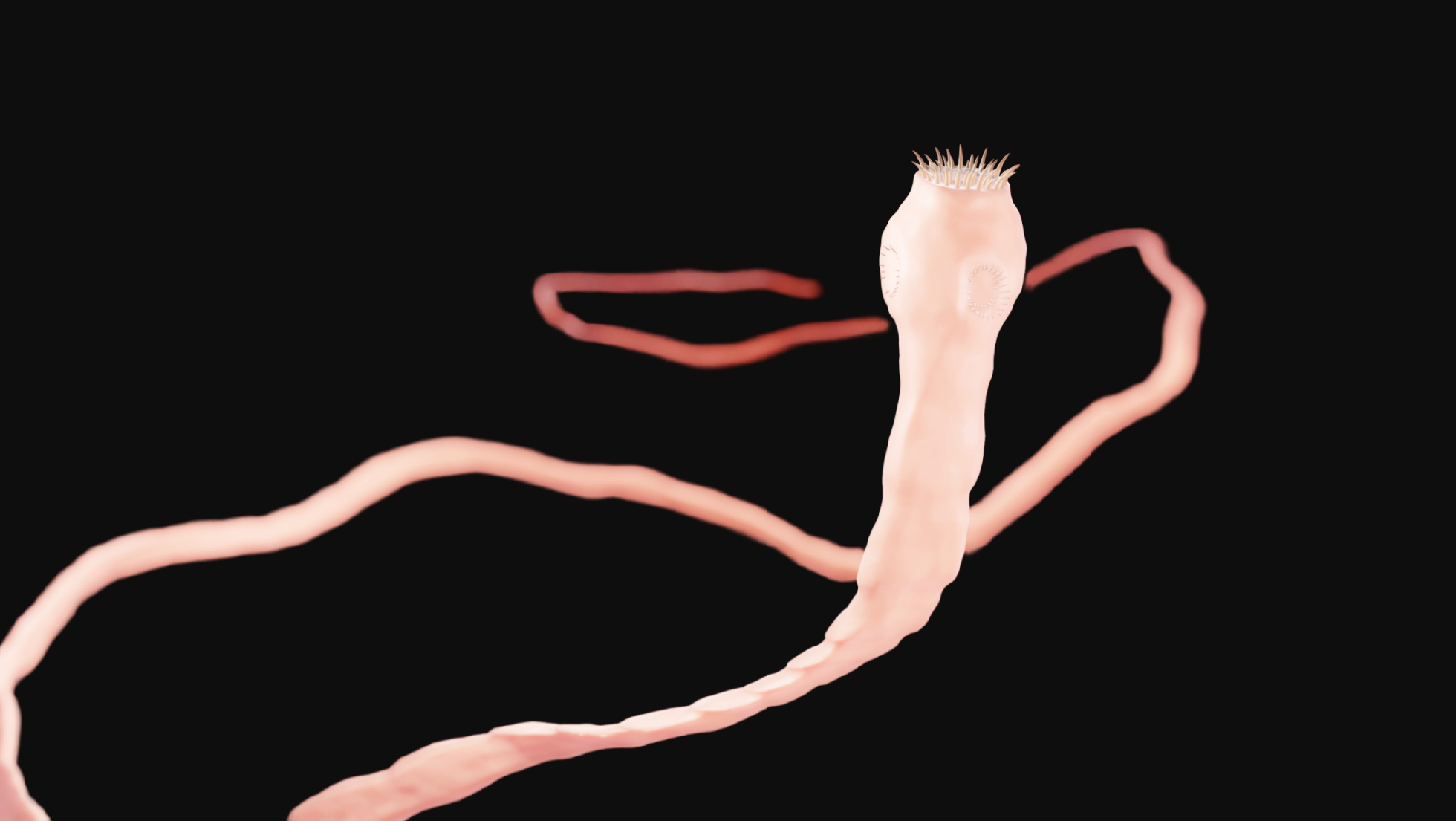A Creature Born of Flesh and Magic
Deep in the heart of the
Northern Wastes, a creature of relatively recent origins stalks the frozen lands feeding on the remains of the living - both past and present. This creature, the Izotz-harrak, emerged from the catastrophe of
the Cataclysm, transformed from a small, simple human digestive system parasite by the magic of the
Ur Hilgarria and the leylines of the land into a nightmare predator that prefers human flesh to all other fare.
The largest Izotz-harrak ever recorded weighed in at 300lbs, with a length of 30 feet, with more typical adult female specimens weighing about 160 lbs and fifteen feet in length. Much of that mass is dedicated to it's segmented worm-like casing. It moves by using it's rough belly scales over the ground in the same manner as serpents move, and has an accellerated pace it uses when pursuing prey on ice. It rolls onto the sharp edges of it's side and "skates" along ice, using a whip-like motion to overtake fallen prey. The Izotz-harrak typically eats already dead prey, most often the bodies of humans who died in the Cataclysm and were frozen under sheets of ice that covered the continent. It will however, stalk and eat the flesh of living creatures when provided with the opportunity to do so apparently perceiving these as a treat as it will leave a frozen dead carcass to chase living prey. It has sharp spine-like teeth that it can use to cause injury to much larger living creatures, and it will quickly engage with healthy warm-blooded animals or sentient beings, particularly humans whom it will stalk for weeks. It preys on creatures of all sizes including those that overmass it by as much as five times.
A Predator that Exploits it's Environment
When hunting, the Izotz-harrak relys on the rigors of it's environment and it's unique adaptation to the frozen wastes, it's gycol based blood. This allows it to tolerate extremely cold temperatures, moving at a pace that equivalences to a slow jog for humans for normal motion, or a fast run when skating on ice. In the Northern Wastes, in the frozen cold, warm blooded creatures have difficulty escaping both the killing cold and their relentless pursuer. Cold blooded animals that are hibernating are easy prey and never wake from their winter nap. Once the Izotz-harrak has cornered its prey, it uses it's sharp edged tentacles around it's large mouth to inject paralyzing digestive juices into the unwitting creature, and when the soft tissue has dissolved into a gel-like liquid, it gorges on the nutritous protien-rich feast.
Reproduction

The Izotz-harrak reproduces sexually. When Izotz-harrak of different genders encounter each other, they will mate, the male will crawl into the mouth of the female, then inject his sperm into a special pouch inside her throat where she stores it until she has found a suitable place to lay her eggs. She then eats the male. The female will mate with numerous males until she locates or kills a creature of at least 30 lbs, and she will use the male as the nesting body if he is of sufficient size, although this is rare. She makes a nest of the dead creature, and spends the next ten days eating it and laying eggs which she fertilizes with the stored sperm, depositing between ten and twenty eggs in the dead creature's body. She then covers the nest which is typically about half eaten with loosely packed ice and soil, and abandons the eggs to their fate, seeking a new nest. She will lay between one and three nests during the winter season.
When the eggs hatch, the young are voracious eaters, and will eat each other as well as the dead body that forms their nest. This canibalism is fortunate as there are typically only two or three survivors of a nesting.
Travelers Beware
It is imperative that travelers in the Northern Wastes travel in groups to ensure that at least some of the party is awake at all times. The Izotz-harrak can be killed by well armed sentient beings if they are aware, prepared, and are not overcome by the elements that this predator is specially adapted to.

Comments